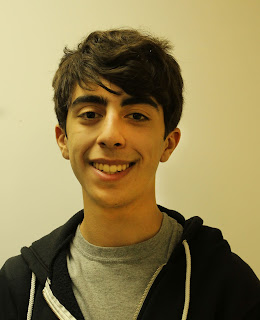Staff Writer
 |
| Columnist John Santos |
Kony 2012 appears to be an awareness campaign that no one could argue against. The Kony 2012 video, made by the charity Invisible Children, calls for action against Joseph Kony, a vicious Ugandan warlord who is infamous for using children as soldiers and slaves in his Lord’s Resistance Army. The video encourages viewers to “make Kony famous” by putting up posters and contacting public figures. As of March 19, the video had been viewed over 83 million times on YouTube and has been endorsed by celebrities including Bill Gates and Kim Kardashian.
The video leads viewers to believe that Kony is operating in Uganda with 30,000 children in his army. The truth is that the Lord’s Resistance Army now only numbers in the hundreds, and they are no longer active in Uganda, but in the neighboring nations of Central African Republic, Democratic Republic of Congo and South Sudan. The Kony 2012 video shows Uganda as it was six years ago, ignoring the fact that Uganda is no longer a country in conflict.
Many Ugandans have expressed anger about the video. A screening in the Ugandan town of Lira was met with outrage; the audience threw objects and jeered. The Ugandan viewers were angry that the film focused more on Kony and the filmmakers than the conflict’s victims and ignored Ugandans’ recovery. The Ugandan Prime Minister uploaded a response to YouTube inviting the world to come see Uganda and stressing that they will find that it is a very different place than the Kony 2012 video would lead one to believe.
With Kony and his troops no longer in Uganda, why is Invisible Children pushing for Ugandan military intervention? As a humanitarian organization, Invisible Children should be focusing on the recovery of the people of Uganda. Invisible Children should direct their attention to things like helping Ugandans plant their fields or helping former child soldiers assimilate back into society, not funding military action to capture a long gone war criminal. The Ugandan military would need to work with the militaries of neighboring countries in order to capture Kony, and cooperation between these countries has not historically worked well.
The video also paints a black and white picture of a very complex situation. The Invisible Children organization portrays the Ugandan military as the “good” force in the region. However, the Ugandan military has been accused of killing civilians, exploiting children as soldiers and looting civilian homes and businesses, just like Kony. The conflict isn’t a simple fight between good and evil; it’s a huge mess. Giving the other side more money and guns isn’t going to help anyone except the other side. The Ugandan people are left out of the equation.
The founders of Invisible Children do have their hearts in the right place. But in the process of trying to help, they have over-simplified a very complicated conflict. Kony 2012 has raised awareness about a brutal warlord, but for many people it has also raised awareness that charities are not always as great as they seem.